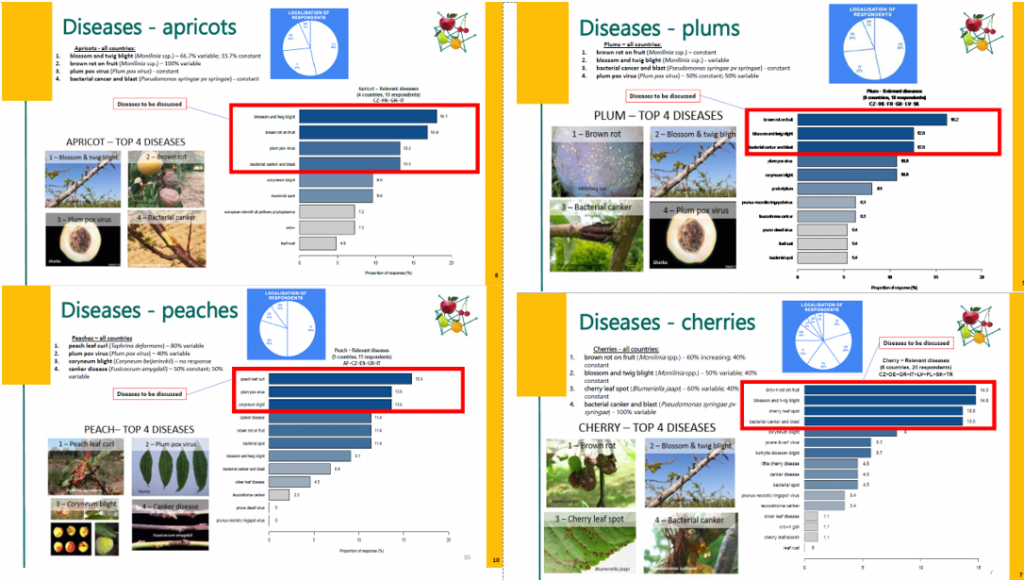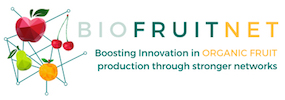Workshop on the current problems and strategies for pest and disease control in stone fruit production in Europe
On the 3rd of November, a workshop on the current problems and strategies for pest and disease control in stone fruit production in Europe was held. The workshop was organized by Radek Vavra from VSUO (Research and Breeding Institute of Pomology Holovousy Ltd.) under the EU project BIOFRUITNET and presented the results of the questionnaires carried out with organic stone fruit growers, researchers, and advisors in the countries with the highest production rates of organic stone fruits in the European Union.
The workshop brought together 15 experts representing organic production organizations in different countries to discuss the diseases and pests affecting cherry, peach, apricot, and plum crops, as well as the strategies used to control them with regard to plant protection products, preventive measures, physical barriers, alternative and innovative measures being used in different countries for each type of crop and the gaps and challenges facing organic fruit growing in the future.
Among the main conclusions of the stone fruit workshop, it stands out the need for technical information on disease control, pests, cultivars and soil and tree nutrition for apricot and cherry. For peach, the main knowledge needs are related to disease and pest control, cultivars and rooststocks and for plum, disease control, pests, cultivars and soil and tree nutrition were among the most important.
The main diseases affecting stone fruit crops, which were discussed in depth in the workshop, are brown rot, blossom and twig blight, bacterial cancer, and blast, coryneum blight. And as for pests, for cherry, the most important are: black cherry aphid, spotted wingdrosophila and cherry fruit fly; for apricot: spotted wing drosophila and earwig; for plum: plum fruit moth, leaf curling plum aphid and red spider mite; finally, for peach, the main pests treated were mediterranean fruit fly and green peach aphid.

Among the main conclusions obtained, the need for research on the effectiveness of the use of protection products and their impact on the environment was highlighted. Correct pruning at the right time was identified as one of the most effective strategies to reduce the impact of the diseases. There are no decision support models for the main diseases identified and, finally, the correct selection of more resistant cultivars is one of the measures that can help organic stone fruit growers to combat diseases and pests in the future.
For more detailed information on the different disease and pest control techniques, please click on the following link.

